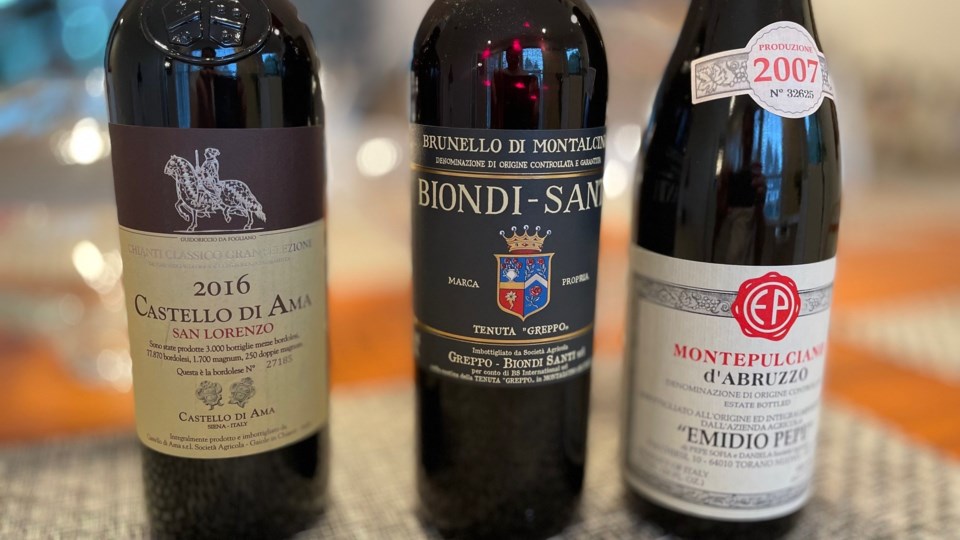One of the reasons many wine drinkers avoid European or “Old World” wines is that their wine labels are quite confusing. The wine labels of North American wines are much more consumer-friendly and easier to understand, as normally, the grape varietal is listed clearly on the label of North American wines. So when you buy a bottle of B.C. or American wine, you know you are getting a wine made with the Sauvignon Blanc or Cabernet Sauvignon grape, as it is listed right on the label.
For wines from “Old World” regions like Italy, only the wine region, not the grape varietal, appears on the wine label. As an example, Chianti and Barolo are wine regions, not grape varietals. Adding to the confusion, in the wine region of Tuscany, there are many versions of the same grape varietal that are used. I hope to clear up any confusion with these terms to entice readers to try wines from these regions.
Chianti and Brunello di Montalcino are wine regions located in Tuscany, Italy. Both wines are made from variations of the Sangiovese grape. In Chianti, the grape varietal used to produce wines is Sangiovese Piccolo. In Brunello di Montalcino, the grape varietal used to produce wines is Sangiovese Grosso, which is commonly known as Brunello. The Brunello grape has thicker skin and is a bit bigger in size than the Sangiovese grape grown in Chianti. As such, Brunello di Montalcino wines are darker in colour, are generally more tannic and age-worthy, and have more complexity than Chianti wines. For this reason, Brunello di Montalcino wines are generally more expensive than Chianti wines.
Throughout generations of planting grapes, winemakers have determined these are the best variations to grow in each specific wine region. The confusion lies in that many people know Italian wines by their region (Barolo, Barbaresco, Chianti) and assumes Brunello is also a wine region. In fact, Brunello is the grape type - i.e. the Brunello (or Sangiovese Grosso) grape of Montalcino.
Confused yet? There is another Sangiovese variation called prognolo gentile that is grown in another Tuscan wine region called Vino Nobile de Montepulciano. Montepulciano is a grape varietal that is grown in other wine regions in Italy like Abruzzo. Why would a wine produced with a Sangiovese variation be called Vino Nobile de Montepulciano if it contains no Montepulciano grapes?
Montepulciano is an anomaly in that it is both a grape varietal and a wine region. The area of Montepulciano is located in the Tuscany region. It is thought that the Montepulciano grape varietal was likely brought over to other regions in Italy from the Montepulciano area but no Montepulciano grapes are grown in the Montepulciano area today. So no one actually knows how this happened and this anomaly is now so ingrained into wine circles that it is too late to correct.
All this confusion makes me want to drink! If you are still confused see my video on this topic.
One of my favourite affordable wines produced with the Montepulciano grape from the Abruzzo wine region is made by Cantina Zaccagnini. Priced at $19.99, it is a fun, easy-to-appreciate wine with a great story. Please see my review of this wine on my YouTube channel.
Until next time, happy drinking!
Tony Kwan is the Richmond News' new columnist. Lawyer by day, food and wine lover by night, Kwan is an epicurean who writes about wine, food and enjoying all that life has to offer.



